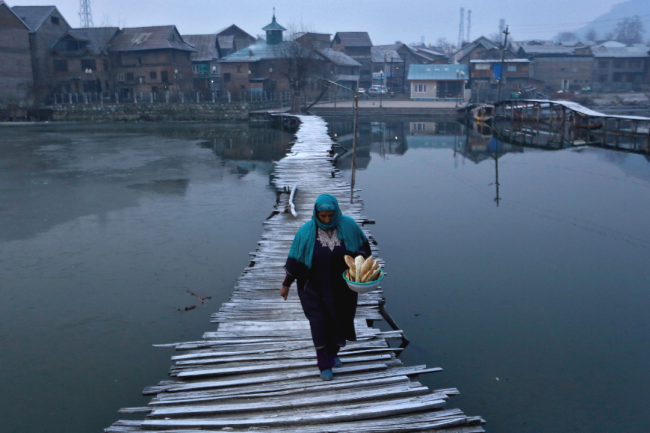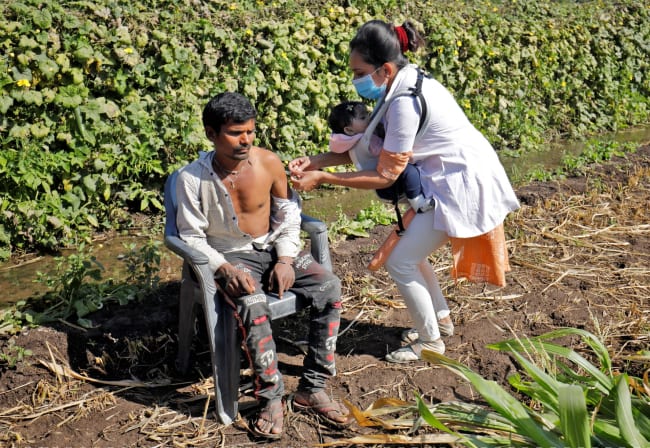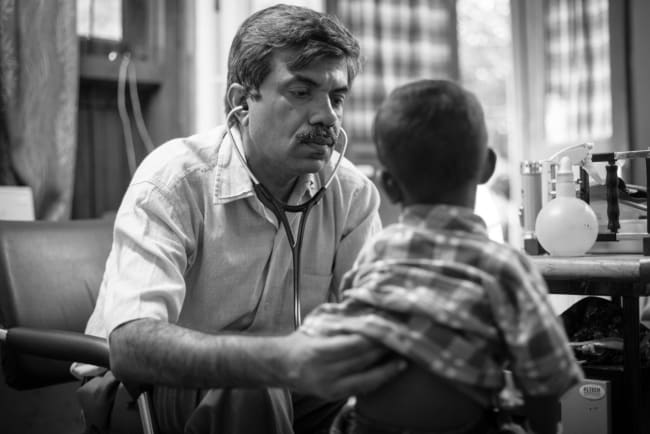India aims to achieve Universal Health Coverage (UHC) by 2030 and community health workers are playing a vital role in helping it achieve this ambitious goal. However, India, a country with a population of nearly 1.4 billion people, is facing a severe shortage of human resources for health.
The World Health Organization (WHO) defines human resources for health as "people engaged in actions that primarily enhance health." Even though the country's Accredited Social Health Activists (ASHA) is the world's largest community volunteer program, India's community health-care workforce tallied 1.04 million in 2020, trailing the 1.4 million health-care workers it needs.
Honored by the WHO with the Global Health Leaders Award in 2022, ASHAs are responsible for improving the health of their communities. They work in areas ranging from maternal and child health to communicable diseases, such as diarrheal disease and pneumonia, and noncommunicable diseases, including diabetes and hypertension. However, the real potential of the ASHA-led community program remains unexplored.
India's community health-care workforce tallied 1.04 million in 2020, trailing the 1.4 million health-care workers it needs
Agents of Digital Health
Digital health has become an important tool to support understaffed and overburdened frontline workers. The National Digital Health Mission (NDHM), now known as Ayushman Bharat Digital Mission (ABDM), was launched on August 15, 2020, with an aim to digitally empower India's health-care system by bridging the gap among different health care-related stakeholders. One such intervention, mSakhi, a mHealth application for community health workers, helped digitize multiple paper-based records, enabling health-care workers to stay up-to-date. And it made reporting essential data easier.
Besides improving patient care, digital health has also been used to remotely train community health workers. This was utilized during the COVID-19 pandemic. During the pandemic, necessity required ASHAs to expand their skills in a very short time, and this served to highlight the potential of digital health interventions. Whatsapp, a phone messaging application, was extensively used to communicate and train frontline health-care workers as newer responsibilities were frequently added to their workload. As agents of digital health, community health workers were able to help people without digital skills set up teleconsultations, acting as a link between primary and tertiary care in rural India.
Mobile access also improved ASHAs' health communication with the general public, enabling them to now use online videos translated into local languages to educate people during home health visits. For example, in Odisha, a state in Eastern India, ASHA workers recorded folk songs featuring health awareness topics and played them to educate people about issues such as COVID-19. Equipped with digital technology, not only were they involved in data collection, contact tracing, household surveys, and identification, but ASHA workers in the country were also able to see and interpret the reports and provide referrals to potentially infected COVID-19 sick community members, to primary care when necessary.

In this way, the pandemic acted as a catalyst for the digitization of community health workers' work. In turn, digital health use related to other medical conditions increased, as well. One such intervention, ASHA Kirana, a digital technology-enabled maternal clinical assessment tool, helped empower ASHAs with knowledge of maternal health and helped improve their communication with physicians. It helped ASHAs proactively react to the collected information as opposed to the previous role of just transmitting it.
Digital platforms like ASHA Soft, in Rajasthan, and ASHWIN portal, in Bihar, also helped improve the transfer of incentives to ASHAs. ASHAs get paid based on their work related to different health programs, so, multiple payment points and the requirement of cash at the relevant health facility results in delays in payments. A consolidated digital platform operated by ASHAs not only improved the monitoring of their work but also helped in timely payments as a result of increased transparency. This also resulted in an increase in motivation among ASHA workers.
Hurdles to Widespread Digital Use
Several hurdles still remain before widespread digitization of frontline health-care workers is achieved. A lack of, or unreliable, internet connectivity continues to be the biggest barrier. More than 25,000 villages in India lack access to the internet. "For the past four days, I have not been able to upload the entered data due to lack of internet connectivity," said Devi*, a community health worker from Pati, a remote village in the hilly regions of the state Uttarakhand.
More than 25,000 villages in India lack access to the internet
A recent initiative to digitize ASHA's incentive-based work in the state of Karnataka was a fiasco. Government officials failed to provide health-care workers with internet connectivity in order to upload digital records of their day's completed work, while others were given tablets but not taught how to use them. Some workers even had to forgo pay because of software glitches. Digitization of work without phasing out the physical records also led to longer workdays for the ASHAs. "Now I have to fill in the physical forms and also upload the same data online," said Devi*.
Poor digital literacy in older health-care workers also affected the use of digital interventions. Younger ASHA workers found it easy to adapt to devices and tools, while some older workers were not tech-savvy and resorted to accepting help from their digital-savvy children.
The lesson: adequate training is needed to help ASHA workers use digital interventions. Providing incentives for the use of digital tools, and providing funding for devices and internet connectivity could also improve their utilization. Low digital literacy among community health workers could also be addressed by providing technical support during the early phase of use.
Research is needed to inform the design of digital intervention programs and the designs should be based on local needs. Digital interventions also need to evolve with the changing needs of communities. To address the hurdle of spotty or no internet connectivity, offline applications or satellite connectivity could be investigated.
If used well, digital health could empower our frontline workers and help in their effective utilization. However, ill-planned interventions will only overburden ASHA workers and make discharging duties for them a challenge.
Besides addressing the workforce shortage, before extensive digitization, India needs to also invest in improving the competence of its existing workforce. It is vital that these interventions are designed to increase the ASHAs toolkit. Digital health can ultimately contribute to Universal Health Care, improving well-being and health care for all.













